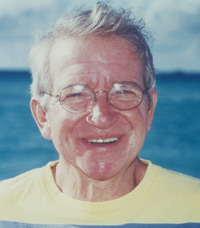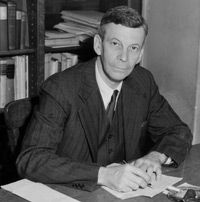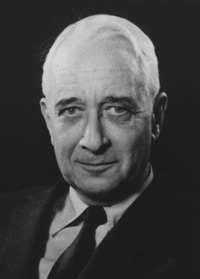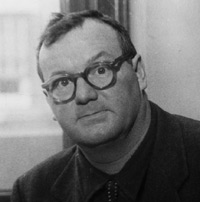|
|
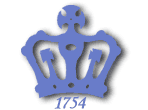 |
 |
 |
 |
|
COLUMBIA FORUMMy Columbia: Van Doren, Trilling and MillsAfter graduating from Columbia, Dan Wakefield ’55 wrote for The Nation and then The Atlantic Monthly through the early 1980s. He is the author of the nonfiction Island in the City (1959), an account of life in Spanish Harlem; the novel Going All the Way (1970) and its 1997 screenplay adaptation; and numerous other books and articles. Wakefield is a lecturer and writer-in-residence at Florida International University. This selection from My Columbia: Reminiscences of University Life (Columbia University, 2004, $29.50; distributed by Columbia University Press: www.columbia.edu/cu/cup), edited by Ashbel Green ’50, recalling Mark Van Doren, Lionel Trilling ’25 and C. Wright Mills, comes from Wakefield’s book, New York in the Fifties (St. Martin’s Press; 1999 reprint edition;). A documentary film of the same name (First Run Features, 2001), based on the book and shown on the Sundance Channel, is available on DVD and VHS. Both books and the film are available from online booksellers. When New Yorkers said “train” it meant the subway. As in Duke Ellington’s “Take the A Train,” you took the train to go downtown to Greenwich Village or uptown to Columbia, on Morningside Heights. I took the IRT line to the local stop at 116th and Broadway and got off there to go to college. Crash and toot of congested traffic, underground earthquaking rush of the subway, faces black, yellow, and swarthy, voices speaking in foreign tongues, made the place seem as alien as Rangoon, yet I felt at home, sensing it was where I should be. Columbia bore no resemblance to the idyllic, pastoral campuses of the movies, or the ones I knew in the Midwest, where ivy-clad buildings were set on rolling hills with ancient elms, and chapel bells tolled the slow passage of time. The quad of dormitories and classroom buildings that made up Columbia College was set in the gritty heart of the city, and the catalogue boasted, “New York is our laboratory.” I loved it. What could be more removed from the rah-rah frat-house collegiate life I had fled?
Because I was a transfer student, I had to make up required courses I had missed, but my faculty advisor allowed me, as a reward, to take the elective “Introduction to Poetry” course of Mark Van Doren my first semester. The morning that began a new term — and for me a whole new life — I went for breakfast at the drugstore my roommates recommended on Amsterdam Avenue (the eastern boundary of the campus, opposite Broadway), squeezing into a packed counter of students crying orders to the friendly pharmacist, Mr. Zipper, who reminded me of a plump Groucho Marx. I picked out something soft and sweet called a French cruller, a doughnut fancier than any I’d dunked in Hoosierdom, and washed it down with sugar-and-cream-laden coffee, hoping to dispel the butterflies I felt before going to meet for the first time the teacher whose words drew me halfway across the country. Van Doren had become a prototype of the American author-scholar-sage as college professor. Winner of the Pulitzer Prize for his Collected Poems in 1940, he had influenced such gifted students as John Berryman and Louis Simpson (as well as young renegade poets still to be heard from, like Allen Ginsberg [’48] and Lawrence Ferlinghetti), the critics Maxwell Geismar [’31] and Lionel Trilling [’25], the editors Robert Giroux [’36] and Clifton Fadiman [’25], and the novelist Herbert Gold [’46]. He appeared in Whittaker Chambers’ political autobiography, Witness, and in Thomas Merton’s [’38] spiritual autobiography, The Seven Storey Mountain. After getting an A in Van Doren’s course on Shakespeare, a football player named Jack Kerouac [’44] quit the Columbia team to spend more time studying literature. Before his retirement at the end of the decade, Van Doren would be described by Newsweek as “a living legend.” When I saw Van Doren in class that morning for the first time, his hair was gray and I had no idea of his age (58), which was anyway irrelevant for he didn’t seem old but ageless, like the visage of one of the presidents on Mount Rushmore. His face had that craggy granite look of being hewn or chiseled by hard-won experience and knowledge, but it wasn’t grim or set in a stare of stony, locked-away wisdom. His eyes gave off a love of his work (which included the students seated before him) and the world, and he had a playful and wry sense of humor. To Allen Tate he was “the scholarly looking poet who always looks as if … he were going to say grace, but says instead damn.” The Noble Voice was the title Van Doren gave one of his books, and it was also an apt description of his own way of speaking — mellow, thoughtful, dignified without being formal. His voice was familiar to radio fans across the country, who heard him discuss great works of literature on “Invitation to Learning.” Van Doren retained a flat Midwestern accent (he was the fourth of five sons of an Illinois country doctor) that made me feel at home. He wasn’t afraid to sound his r’s, and he spoke at a measured, leisurely pace, letting the words come out without being clipped at the end or hurried along like the New York traffic. He anglicized foreign words when he pronounced them, speaking of Don Quixote as “Quicks-ott,” with the x sounding, rather than in the Spanish manner of “Key-ho-tay.” He said with a wry smile that if we followed that style, we would have to call the capital of France “Paree,” and he preferred plain “Paris.” Hearing that plain Midwestern accent, as well as the plain thinking behind it, bolstered my confidence, proving that people from the hinterlands could make it in East Coast literary circles. It gave me courage to speak to some of my new classmates, jostling down the steps of Hamilton Hall after a lecture. “Hey, Van Doren’s great, huh?” I said. One of them shrugged, and in a nasal New Yorkese said, “I dunno, he’s a little too midwestuhn.” “Yeah, that’s it!” I blurted out. It was not just the familiar accent that made it easier to knock at the door of Van Doren’s office and introduce myself later that semester. It was also the kindness in the older man’s eyes, in his whole demeanor. “May I come in?” “Please.” Professor Van Doren greeted me as a fellow Midwesterner and fellow lover of words and stories. I told him about the impact of reading his essay “Education by Books” and mentioned that a friend of mine from high school, John Sigler, had been one of his student hosts when he gave a reading at Dartmouth. Van Doren said he wished he’d known: “I would have told him you were a student of mine.” I left his office in Hamilton Hall not only feeling welcomed and acknowledged but somehow made safe in that alien place, intimidating city and sophisticated college. I had the reassuring sense that because such a man was here, no deep-down harm could come to me, no malevolence invade the grace of his plain goodness.
A student whose poetry Van Doren had encouraged (this was four years before I met him myself) came running into the office of the Columbia English department saying, “I just saw the light!” Most of the professors there thought the student’s claim of a visionary experience meant he had finally cracked. The only one who wanted to hear about it was Mark Van Doren. More than 45 years later, that former student, Allen Ginsberg, tells me, “At Columbia I found nourishment from Van Doren — spiritual nourishment. He had a spiritual gift.” Van Doren’s kindness to students did not equal sentimentality, or excuse sloth. One morning in his poetry class he called on a student who confessed he had failed to read the assigned poem. Van Doren’s face transformed, tightening, turning a deep and outraged red, and the voice, still measured and controlled, but stern as that of a ship’s captain charging mutiny, ordered the student to leave the room. In the breath-held silence that followed, the hapless, hangdog fellow fumbled together his books and fled. I downed a cold chocolate milk at Chock Full O’ Nuts on Broadway to calm my anxiety after class, for I hadn’t read the assignment myself, and I wondered what I’d have done if he’d called on me. From then on I was always prepared, but I wondered more deeply if the anger of this good man was an aberration or a part of his personality, a necessary component of being a great professor. I knew I’d learn the answer; Van Doren would teach me. A hush of respect and excitement came over Van Doren’s Narrative Art class when he said he was going to take time out from the great books we were studying to discuss a story written by one of our own classmates, Ivan Gold [’53]. Heads turned to Ivan, who slumped down in his seat just in front of me as Van Doren explained to the class that Mr. Gold’s story, “A Change of Air,” which had won the fiction prize of the student literary magazine, The Columbia Review, was worthy of our attention. The story was about a promiscuous young woman from the Lower East Side who voluntarily engaged in sex with members of a teenage gang. She was so traumatized she was sent to a mental hospital, saw a psychiatrist, and eventually returned to her neighborhood a transformed person who politely refused to have sex with any of the old gang. “That must have been one hell of a psychiatrist,” one of the boys remarked with wonder. Van Doren wanted to know what the force or power of change was behind this story. He educed or drew out of us (for that was his method of education) the realization that this new force in the world was psychiatry, which now was our accepted system for effecting change, just as in the writers of the past we had studied, like Homer, Dante, and the authors of the Bible, God was the source of transformation in people’s lives. Through our own classmate’s story of a teenage sexual trauma, Van Doren taught us something not only about writing and literature but also about one of the major shifts in modern man’s understanding of himself and his world, a shift just being recognized and acknowledged in my own generation. “I didn’t know what the story was about until Van Doren told me in class that day,” Ivan Gold says. “I thought it was about these guys pissing away their time, but he showed me it was about the girl, and what changed her.” Ivan later learned that Van Doren had sent the story to an editor he knew at New World Writing, a prestigious literary periodical of the day, where it was published at the end of that year, 1953. “Jesus was the most ruthless of men,” Van Doren said in a tone as hard as a struck bell, and I came to tingling attention. The modern image of Jesus, Van Doren said, was of a man almost unrelated to the one described in the New Testament as a strong and stern leader, ruthless in following his conception of truth and iron in his will. “He was not,” Van Doren said, “an easy man to follow. He was certainly not like our ministers now who try to be one of the crowd and take a drink at a cocktail party to prove it, or tell an off-color joke. That seems to be their approach today.” The professor paused for a moment, and then he said, “Maybe that’s why we hate them so much.” I remembered Van Doren’s anger at the student who hadn’t done his homework, and I realized it was no aberration but that Van Doren, too, was ruthless in his teaching, and respected those who demanded the most of the people they led. I quoted some of his comments on Jesus in an article I wrote a few years later in The Nation, “Slick Paper Christianity,” and sent Van Doren a copy. I enclosed it with a letter in which I acknowledged the gift of his teaching, and recalled the New York student’s saying he was “too midwestuhn.” He wrote back thanking me for telling him of the student’s judgment: “I was afraid I had changed.”
I waited until my junior year to take a course with Lionel Trilling [’25], fearing I wasn’t yet up to the intellectual level of this professor, who was described by his peers as “the most intelligent man of his generation” and “the intellectuals’ conscience.” The Liberal Imagination, Trilling’s book of essays published in 1950, which dealt not only with literature but also with Freud, Kinsey, and American society, had became a touchstone of the decade. I was equally impressed with his novel, The Middle of the Journey, especially when I learned the main character was based on his former student Whittaker Chambers, the controversial ex-Communist. Trilling himself was as elegant as his prose. He looked the part of the aristocratic critic as he stood before us at the front of the class in his three-piece suit, his hair already a distinguished gray at 48. He had the darkest circles under his eyes I had ever seen, so dark they reminded me of the shiners produced by a well-placed punch in a street fight. I assumed these circles were results of the deep study he engaged in, the heavy-duty intellectual battles. Professor Trilling took a significant drag on the cigarette he inevitably held, sometimes gesturing with it like a wand, sometimes holding it poised just beyond his lips, like people did in the old movies of New York high life, where all the men seemed to wear only tuxedos or dressing gowns and subsisted entirely on caviar and champagne. Twin streams of smoke flowed from his nostrils, like an underlining of his words. “We shall not read any criticism of the work of the poets we are going to study this semester,” he announced. “We shall only read the work itself — all the poems written by Wordsworth, Keats, and Yeats.” There were intakes of breath as we absorbed the shock of hearing that our most distinguished literary critic wasn’t going to assign us any criticism. When Trilling said we were going to read all the poems of Wordsworth, Keats, and Yeats, he didn’t mean just once. “Until you have read a poem at least a dozen times,” he explained, “you haven’t even begun to get acquainted with it, much less to know what it means.” Ideas became as real as stories in the poetry of Yeats, as I learned to read it in Trilling’s class, and by the end of the term I had other lines of verse running through my mind than the ones that I brought to college from childhood. “Little Orphan Annie came to our house to stay / To wash the cups and saucers and brush the crumbs away” had been replaced with Crazy Jane’s “Wrap that foul body up / In as foul a rag / I carry the sun in a golden cup / The moon in a silver bag.” The comforting time “When the frost is on the punkin / And the fodder’s in the shock” was supplanted by the soul-shaking vision of a world in which — as I recited to myself in the roar of the hurtling IRT express and in the early morning hours in the dorm after studying Marx and Freud, Kierkegaard and Nietzsche, in our course in Contemporary Civilization — “Turning and turning in the widening gyre / The falcon cannot hear the falconer.” If Van Doren’s course introduced me to poetry, Trilling instilled it in me, making it part of my consciousness, accessible for the rest of my life. Though the two teachers were different in style and manner — Harold Kushner [’55] describes Van Doren as “the populist” and Trilling “the aristocrat” — their approach to teaching was much the same. It made sense when I learned years later that Trilling had been Van Doren’s student. It wouldn’t have occurred to me in college, for both men looked to my youthful eyes like contemporaries; I assumed the great men of our faculty all sprang from the womb as full professors. Though Trilling’s donnish manner made some people think him aloof, he was always accessible and supportive of his students, especially the aspiring writers. On a spring day in 1953, Trilling walked in the park along the Hudson River below the campus, holding the hand of his four-year-old son, James, and talking with his student Ivan Gold. Ivan was going to graduate in June, and wondered, if his goal in life was to write fiction, whether he should go to grad school for an M.A. in literature, which would also get him a draft deferment from service during the ongoing Korean War (or “conflict,” as it was called), or whether he should go ahead into the Army. Trilling admitted that he, too, wanted most of all to be a fiction writer, and said he regarded the literary criticism he did as secondary to the novel and short stories he had written. He didn’t see academic life as the best route to Ivan’s goal. “If you want to write, Mr. Gold,” he said, “stay away from graduate school.” Ivan took the advice and was drafted after graduation. “Trilling was right, of course, the way those guys [our Columbia professors] always were,” he says, looking back nearly 40 years later. “After I got back from the Army and living in Japan, I did go to graduate school on the GI Bill for a while, but I couldn’t hack it.” Ned O’Gorman, who met Van Doren and Trilling while he was a graduate student at Columbia in the ’50s, says, “I sent Mark Van Doren every poem I ever wrote, and he sent me a postcard or letter the next day with his comments. Lionel met my adopted son, Ricky, at the Aspen Institute, and I have a picture of him cutting a watermelon with him. Trilling didn’t know how to cut a watermelon, and he’s cutting it the wrong way. It’s a picture I treasure. Those men were surrogate fathers for many of us.” When Sam Astrachan [’55] was a junior at Columbia and his father died, Trilling got him a scholarship that lasted until graduation. When Sam showed Trilling part of his first novel, the professor got his student into Yaddo, the writers’ colony, to finish it, and then sent the book to another former student, Robert Giroux [’36], who published Astrachan’s An End to Dying at Farrar, Straus. In a letter Sam Astrachan wrote me last year from his home in Gordes, in the south of France, he said of Trilling, “When he died, I felt I had lost a father.” Van Doren and Trilling were more to us than lions. The young lion of Columbia’s faculty in the ’50s was a brash, dynamic sociologist up from Texas, C. Wright Mills, who had made a name for himself beyond the academy with a provocative new book on the American middle class called White Collar, and was working on a similar but even more controversial critique of the upper classes called The Power Elite. If Mark Van Doren and Lionel Trilling epitomized in their personal style and the thrust of their work the best of traditional values, C. Wright Mills was a harbinger of the anti-establishment future. Impossible to picture in the confinement of a three-piece suit — he even rebelled against wearing a tie — Mills roared down to Columbia on the BMW motorcycle he drove from his house in Rockland County, outfitted in work boots, helmet, flannel shirt, and heavy-duty corduroys. His broad chest was crisscrossed with canvas straps of duffel bags bearing books, a canteen, and packages of the prepared food he took on camping trips, which he heated up in his office to save time. He looked like a guerrilla warrior ready to do battle, and in a way he was.
I first became interested in Mills when my classmate Mike Naver [’54] pointed out to me an ad for White Collar that was part of an enticement for joining the Book Find Club, and I signed up to get Mills’s work as a bonus. White Collar moved and excited me, as it had so many readers who, I’d heard, wrote letters to the author, responding to the issues he raised and also seeking his advice on problems, for the book seemed to address the deep discontent people felt about their jobs and their circumscribed futures. With its sharp critique of the growing impersonality of white-collar work, it touched my own typical ’50s fear, shared by many of my fellow students, that we’d lockstep into some automated, sterile future. But the very articulation of the fear raised hope that we might transcend it. I was eager to see the author of this powerful work in action in the classroom, but I had to get his permission to take his seminar, which was limited to “qualified” students. I waited for my quarry in the cold, cheerless lobby of Hamilton Hall, ambushed Mills on the way to the elevator, and squeezed in beside him. Riding in an elevator with Mills felt like riding in a Volkswagen with an elephant, not so much because of his size — he was a little over 6 feet tall and weighed 200 pounds — but because of a sense of restlessness and ready-to-burst energy about him. Mills fired the requisite questions at me in a rather aggressive, discouraging tone, and I’m sure my answers made obvious my lack of academic qualifications for the course, which I compensated for with enthusiasm. I trotted out my credentials as a journalist and threw in my admiration for White Collar. When the elevator ejected the crowd at his floor, Mills glanced back at me and said simply, “O.K.” Mills at 38 was an exhilarating teacher. He stalked the room or pounded his fist on the table to emphasize a point, surprising us with ideas that seemed utopian, except he was so convinced of their practicality you couldn’t dismiss them as mere theory. He shocked us out of our torpor by challenging each of us to build our own house, as he had done himself. He even insisted that, if he applied himself, any man could build his own car — a feat not even Mills performed, though he made an intensive study of German engines and loved to tinker with them. Mills urged us, as part of a new generation coming of age, to abandon the cities, which he felt were already hopelessly dehumanizing, and set up small, self-governing units around the country. His vision of communities where people could develop crafts and skills and work with their hands was in some way acted out in the communes of the sixties, though the drug culture would have been completely foreign to Mills. The yearning for such an independent and self-sufficient way of life that Mills expressed in the ’50s was part of the message that so excited his audience. Inspired by his challenge to think for ourselves, I tried an experiment in his course. Instead of cranking out the usual dry précis of one of the heavyweight books we read each week, I let my imagination go to town, comparing Ortega y Gasset’s Revolt of the Masses with a Hemingway story. When Mills handed back the papers, he scanned the classroom and asked with sly curiosity, “Which one is Wakefield?” I took a deep breath and held up my hand. “See me after class,” he said. In his office, I waited in suspense while Mills sat behind the desk, stoked up his pipe, and looked me over. Finally he asked what had made me write a paper comparing Ortega and Hemingway. I confessed I was bored by simply recounting the contents of the book in précis form. “My God, I’m bored too, reading the damn things,” he said, and we both laughed. He told me to “do some more,” continue to experiment. I started going to his office after class to talk about the latest paper, and these discussions broadened into friendly inquiries about my plans and goals, and even — to my flattered surprise — a sharing of his own work and concerns. I think he felt a bond with me because of our similar backgrounds as middle-class boys from the hinterlands who made it to the intellectual center, New York. I told him how my admiration for White Collar had inspired me to take his course, and he said what the book meant to him personally. “I met a woman at a cocktail party who really understands me,” he said. “She told me, ‘I know you, Mills. I’ve read White Collar and I know what it’s all about.’ I asked her to tell me, and she said, ‘That’s the story of a Texas boy who came to New York.’ ” Mills paused, frowning, and then broke into a giant grin and said, “My God, she was right.” As he later wrote, White Collar was “a task primarily motivated by the desire to articulate my own experience in New York City since 1945.” Mills became a friend whose help and guidance would see me through the early years in New York. Columbia had not only provided me with an education but a new family as well, in the city I’d adopted as home. Reprinted with the permission of the author, Dan Wakefield ’55 (www.danwakefield.com).
|
|
|||||||||||||||||||||||||||||||||||||||||||||||||||||||||||||||||||||
